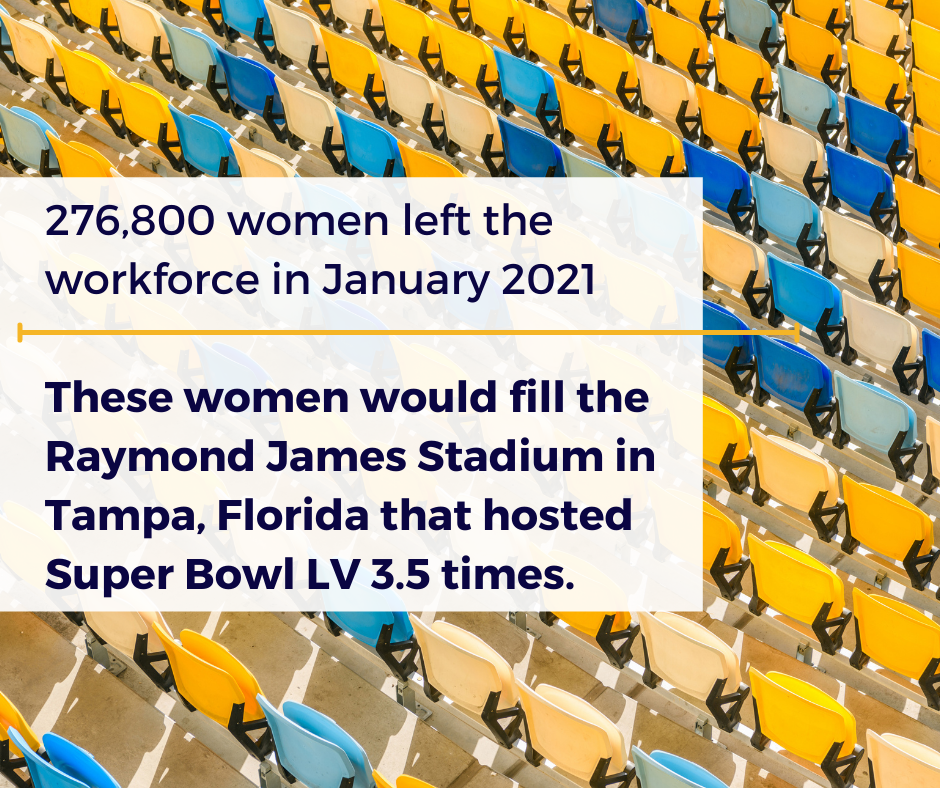Why Are Women Leaving the Workforce? It’s not just because of COVID.
You can read on below or listen here:
“More than 2.3 million women have left the labor force since last February.” reported by Fortune.
“Women have left” feels somehow wrong, doesn’t it? In the face of every gender equality mission and so much effort, they left.
This is not the same as the text message saying: “I have left for the grocery store!”
I know many of these women. This decision was full of angst. For many there felt like no decision at all: a forced hand. For more, it was a choice of children or career. This is exactly the war that’s been waged against women for as long as I’ve been aware.
Can you have “it all” if all includes family and work? Can you advance professionally as a woman? What about in a global pandemic. The numbers say a lot.
When we read a headline like this one: Nearly 80% of the 346,000 workers who vanished from the U.S. labor force in January are women. We can’t get our head around it.
Let’s dig into it. That means that 276,800 women vanished from the labor force in January. I find vanished loathsome too but I can’t fault anyone, what word does accurately speaks to this kind of loss?
There are 75,000 seats at the Raymond James Stadium in Tampa, Florida where the Super Bowl LV was played. You could fill that stadium 3 and a half times with the women that faced the impossible decision to leave the workforce in January alone.
Women have exited the workforce both by necessity and choice. What’s more: 1 in 4 women are actively considering leaving the workplace or downshifting their careers today.1
So why are women leaving?
Simply put: It’s all too much.
There have been more articles about burnout and reaching the end of ropes and expose’s on women reaching the breaking point. That’s a start. Great to let women know they’re not alone. But now what?
The problem as I see it has two parts:
Part One: We’re attempting to do too much and all of the solutions are actually additive. They put MORE on your already overwhelmed to-do list with a potential pay-off in the future.
Part Two: With too much to do we stop doing the things that are most nourishing to “us” first because we allow those activities to feel “unnecessary”.
Both of these problems are exacerbated by the fact women don’t have access to women leading in their own lives.
This is one of the primary reasons I started the Real Women in Business podcast. I believe when we share stories and access to women like ourselves doing the work we have a point of inspiration.
For example: If I can see how Lisa Jackson, an incredible leader within Accenture can work from home, with her kids and still create opportunities to take care of herself and nurture friendships I can see how that’s possible in my life too.
When Molly Hartley, founder of Scratch Bakeshop shares her entrepreneurial dream, about being a Mom and dreaming ever bigger we get to do that with her.
When Abby Burlile talks about climbing the ladder of success as a millennial while still being passionate about photography and her contribution to her community we get to be inspired by Abby and with her.
So many of our “examples” feel out of reach. Sheryl Sandberg had a memorable quote on this “Men aren’t asked: ‘How do you do that? How do you do this? Do you have nannies? Do you have a cook?’ My husband has never been asked. I am asked that all the time.” And while I appreciate her frustration on the inequality of the question I think the question is what women are looking for the answer to. Or perhaps larger: How do you do it? No, really, how, I need to know because I am not and I need you to show me. If it takes multiple nannies, a cook and a housekeeper than I know I need to shift my own expectations.
Access to women leading from a whole life perspective is critical. We need a new frame of reference, we need to see the rise of a new kind of leadership one committed to stewarding the women in their care. It’s happening and I believe it’s been happening for a long time in smaller, less-seen, pockets, we need to shine the light of the sun on it so it can grow.
Access is where we start, from there we can build into mentorship and sponsorship.
1. https://womenintheworkplace.com/ 2020 respondents



